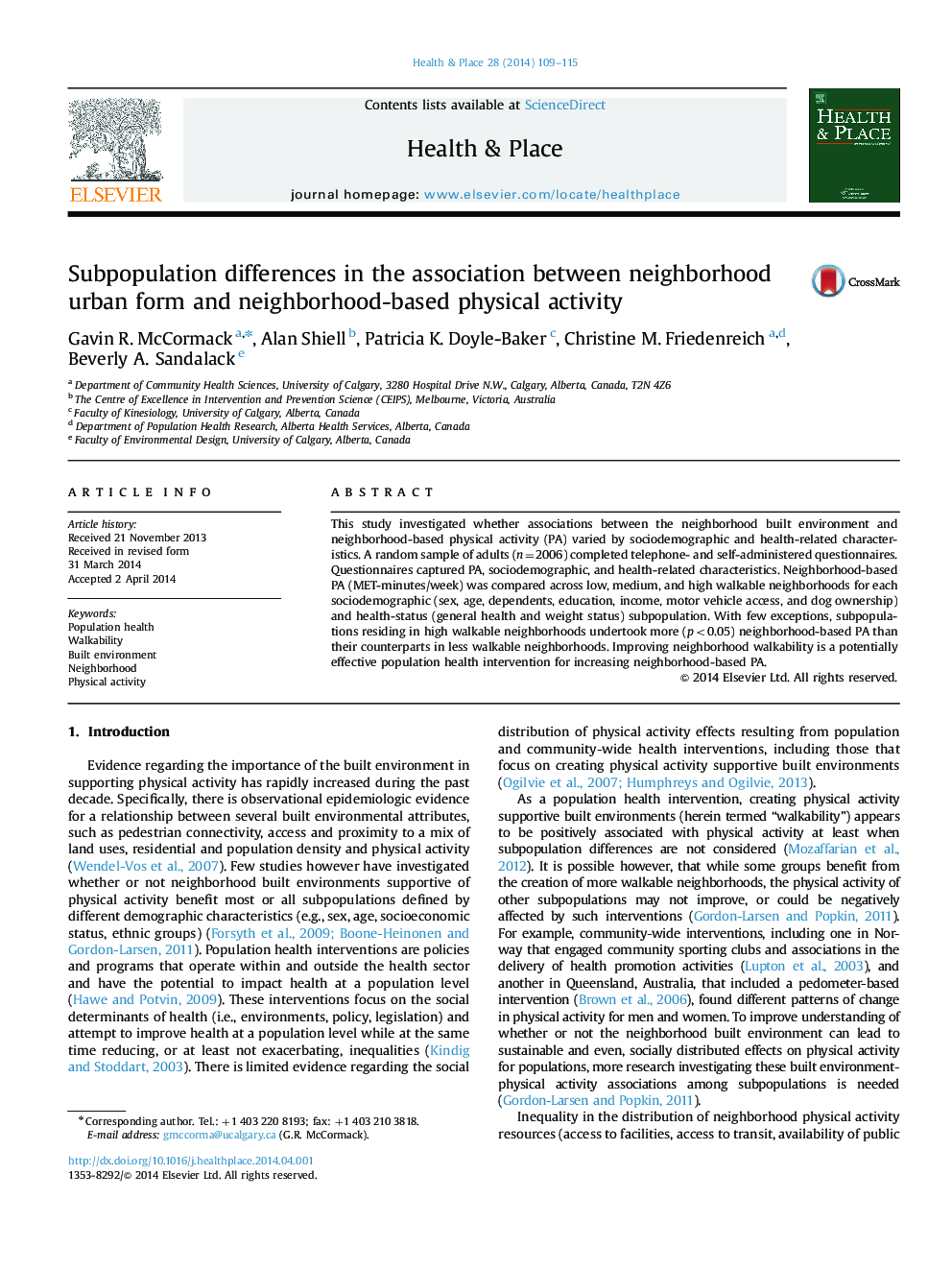| Article ID | Journal | Published Year | Pages | File Type |
|---|---|---|---|---|
| 7458595 | Health & Place | 2014 | 7 Pages |
Abstract
This study investigated whether associations between the neighborhood built environment and neighborhood-based physical activity (PA) varied by sociodemographic and health-related characteristics. A random sample of adults (n=2006) completed telephone- and self-administered questionnaires. Questionnaires captured PA, sociodemographic, and health-related characteristics. Neighborhood-based PA (MET-minutes/week) was compared across low, medium, and high walkable neighborhoods for each sociodemographic (sex, age, dependents, education, income, motor vehicle access, and dog ownership) and health-status (general health and weight status) subpopulation. With few exceptions, subpopulations residing in high walkable neighborhoods undertook more (p<0.05) neighborhood-based PA than their counterparts in less walkable neighborhoods. Improving neighborhood walkability is a potentially effective population health intervention for increasing neighborhood-based PA.
Related Topics
Health Sciences
Medicine and Dentistry
Public Health and Health Policy
Authors
Gavin R. McCormack, Alan Shiell, Patricia K. Doyle-Baker, Christine M. Friedenreich, Beverly A. Sandalack,
